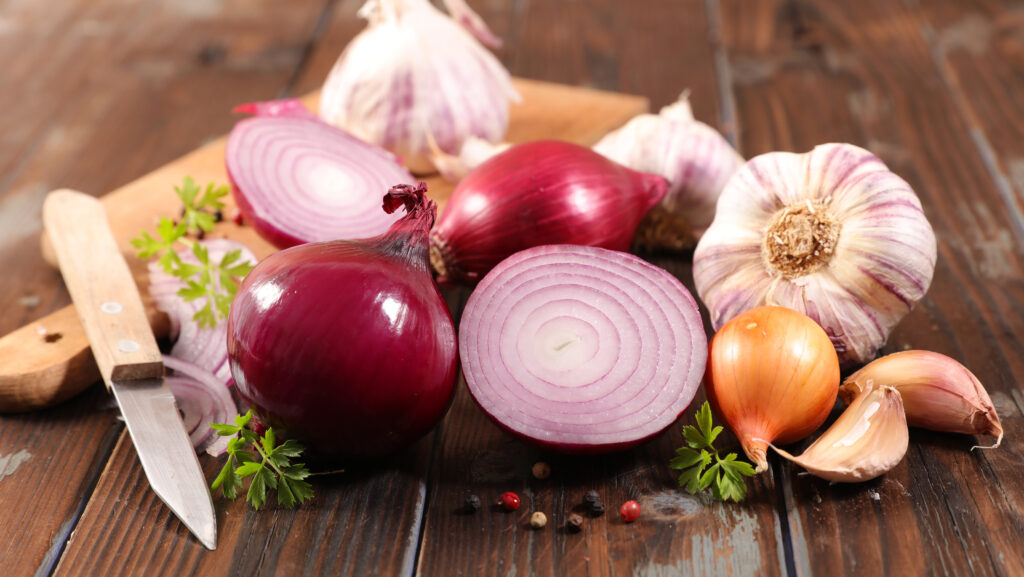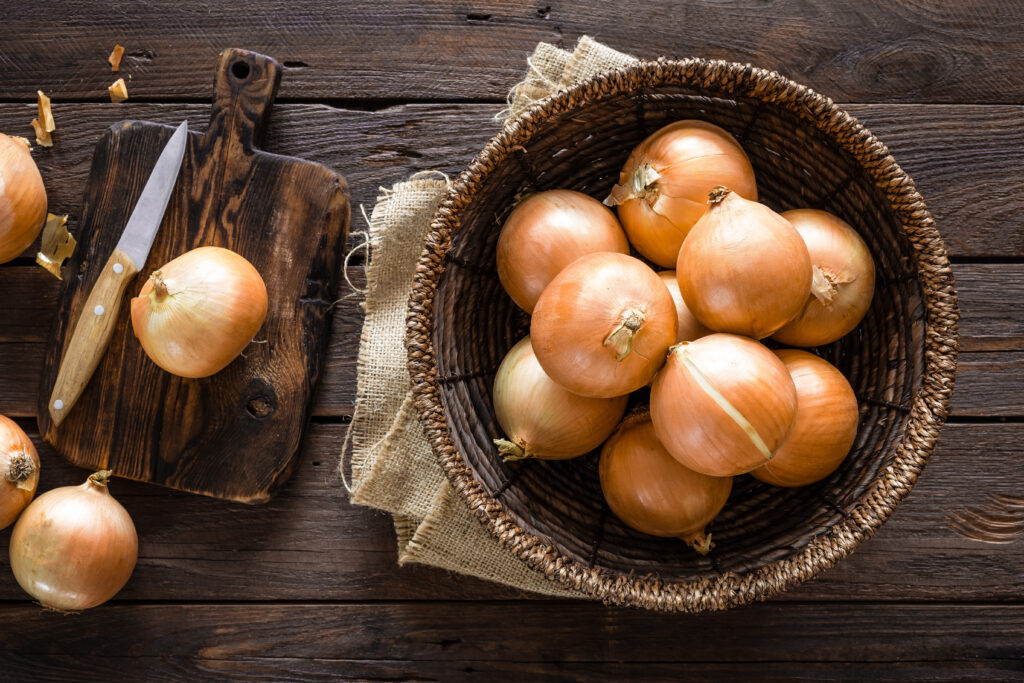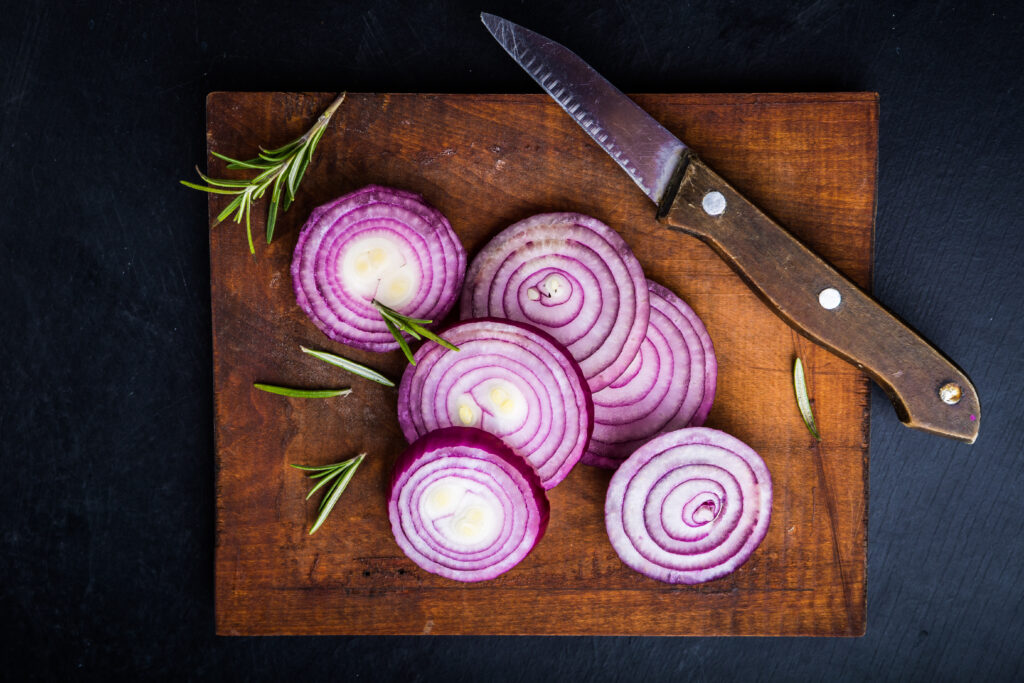
Everything You Should Know About Onions
Onions, also called bulb onions, are the most widely cultivated and consumed vegetables. It is present in almost every other recipe, especially in Pakistani cuisine. So, you must have consumed it a lot, whether you like it or not.
Well, in any case, it is of immense importance to know about the foods we consume daily. By knowing what we eat, we can understand our bodies and health better. So, without further ado, read ahead to learn more about onions!
Onion’s Origin
Initially, the wild Onion got used predominantly in western and eastern Asia. Although it soon got extinct, worldwide domestication means the onions were still in use in areas such as Iran and the sub-continent.
The usage of onions dates back to the ancient era. Archaeologists have found traces of onions from Bronze Age Settlements in China, which dates back to 5000BCE. Similar evidence also got discovered in Egypt, Rome, Europe, Pompeii, and North America, proving worldwide usage.
Types of Onions
Onion is a biennial plant that grows around 15-45cm in height. It has yellowish fan-shaped leaves and fibrous roots. Over time, the onion bulb matures in the roots and swells. Now, depending on the region and method of cultivation, there can numerous types of onions. Here are the three primary types of onions (color-based):
- Yellow/Brown Onions: These are sweet and full-flavored, which get mostly used for caramelized onions and French Onion Soup.
- Red/Purple Onions: A common ingredient in Pakistani cuisine, red/purple onions have a sharp flavor. These get mostly used in grilling and curries.
- White Onions: With a mild flavor, white onions get mostly used in classic Mexican cuisine. It turns golden after cooking and sautés.

Nutritional Value of Onions
Onion is not only famous for its flavor and texture, but also for its nutritious nature. A 3.5-ounce portion of Onion has only 40-calories, which is comparatively quite low.
It also has the following nutrients:
- 89% of water
- 1.1 grams of protein
- 9.3 grams of carbohydrates
- 4.2 grams of sugar
- 1.7 grams of Fiber
- 0.1 grams of Fats
Let’s evaluate a bit in detail. Carbohydrates form 9-10% of an onion. It comprises of simple sugars, such as glucose and fructose that are essential for obtaining sufficient energy for the day—the Fiber forms around 3% of an onion that includes healthy fibers, such as Fructans. Hence, improving digestive health and reducing inflammation.
Apart from this, Onion also supplies essential vitamins and minerals. These include Vitamin C, B6, Folate, and Potassium. There are plant compounds present, such as Quercetin and Sulfur compounds. Red/purple Onions also have Anthocyanins, which are quite powerful antioxidants. However, cooking at high temperatures can reduce the amounts of antioxidants in Onions.
Health Benefits of Onions
With a nutrient-dense profile, Onions possess numerous health benefits for humans. No wonder it gets largely consumed worldwide. Here are some fundamental benefits of eating Onions to the human body.
- Strengthens Bone Health
A majority of old age people suffer from Osteoporosis, which is bone deterioration and weakening. However, regular Onion consumption can protect bones against it. And, in some cases, even increase bone density.
- Regulates Blood Sugar Level
According to research, patients with Type-2 diabetes can benefit a lot from Onions. Its unique composition regulates blood sugar levels and keeps it balanced. However, there is minimal research regarding Type-1 diabetes patients and whether the effect is identical to them.

Downsides of Eating Onions
Although Onion consumption has a lot of benefits, there are some side effects too. Perhaps, the most common downside of eating onions is the bad breath it produces. People who enjoy eating Onions often have to rely on mouth fresheners while interacting with others. Otherwise, it creates a sense of unpleasantness. Other downsides include:
- Eye Irritation
When chopping Onions, you must have felt a sharp stinging in eyes and then tears. It is also why parents stop this particular task in the kitchen. Well, have you ever wondered why does this happen?
Well, Onion cells release a gas called lachrymatory factor (LF) when cut. The gas mixes with the neurons in the eyes and causes stinging. In response, the tear gland starts tear production to flush out the irritant. Cutting Onions under running water can stop the gas from diffusing into the air.
- Onion Intolerance
Yes, it is very rare, but some people are allergic to Onions. They experience digestive problems and bloating upon consumption. In extreme cases, a slight touch can trigger allergic reactions.

Leave your comment
You must be logged in to post a comment.